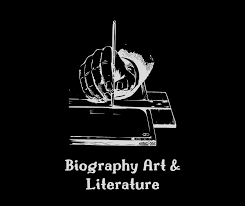Biography writing is a fascinating and challenging art that requires a combination of storytelling, research, and historical analysis. In this article, we’ll explore some tips and techniques for writing a compelling biography, as well as examine some examples of great biographies.
Step 1: Research
The first step in writing a biography is research. This involves gathering information about the person you’re writing about, including their life story, achievements, and contributions to their field. You may need to consult primary sources such as diaries, letters, and personal papers, as well as secondary sources such as historical texts and academic papers.
Step 2: Outline
Once you’ve completed your research, it’s important to create an outline for your biography. This will help you organize your thoughts and create a structure for your writing. Consider organizing your biography chronologically, thematically, or a combination of both.
Step 3: Write from the Heart
When writing a biography, it’s important to write from the heart. Use storytelling techniques to bring your subject to life and make them relatable to your readers. Consider using anecdotes and personal stories to help your readers connect with your subject on a personal level.
Step 4: Be Objective
While it’s important to write from the heart, it’s also important to be objective in your writing. Avoid writing a hagiography (a biography that only focuses on the positive aspects of your subject), or a hatchet job (a biography that only focuses on the negative aspects of your subject). Instead, strive for balance and objectivity in your writing.
Step 5: Use Vivid Language
Vivid language can bring your biography to life and help your readers visualize your subject’s experiences. Use sensory details to describe the sights, sounds, smells, and emotions of the moments you’re writing about. This can help your readers feel as though they’re experiencing your subject’s journey alongside you.
Step 6: Seek Feedback
As you write your biography, it’s a good idea to seek feedback from others. Share your work with friends, family, or writing groups, and ask for their input. This can help you identify areas where your writing could be improved and ensure that your message is clear and effective.
Step 7: Edit and Revise
Once you’ve written your first draft, it’s time to edit and revise your work. Read through your writing and look for areas where you can improve your message or clarify your points. Check for grammar and spelling errors, and make sure your writing is free from typos and mistakes.
Some Examples of Great Biographies
“Steve Jobs” by Walter Isaacson
This biography of the late Steve Jobs, co-founder of Apple Inc., is a masterful work of storytelling and research. Isaacson spent years researching Jobs and conducting interviews with him and his family, friends, and colleagues. The result is a compelling portrait of a visionary entrepreneur who revolutionized the computer and smartphone industries.
“The Immortal Life of Henrietta Lacks” by Rebecca Skloot
This biography tells the story of Henrietta Lacks, an African American woman whose cancer cells were used without her knowledge or consent to develop medical treatments. Skloot’s book is a powerful exploration of medical ethics, race, and the legacy of one woman’s life.
“Leonardo da Vinci” by Walter Isaacson
Isaacson’s biography of Leonardo da Vinci is a fascinating exploration of one of history’s most creative and enigmatic figures. Using da Vinci’s notebooks and personal papers, as well as historical texts and academic research, Isaacson paints a vivid portrait of the artist, scientist, and inventor.





